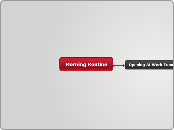door Cary Chicaiza 4 jaren geleden
648
CHAPTER 8 - PRINCIPLES OF QUESTIONNAIRE CONSTRUCTION
Crafting an effective questionnaire involves several key principles. One critical technique is reversing the wording in some items to prevent response sets, particularly the acquiescence response set.









